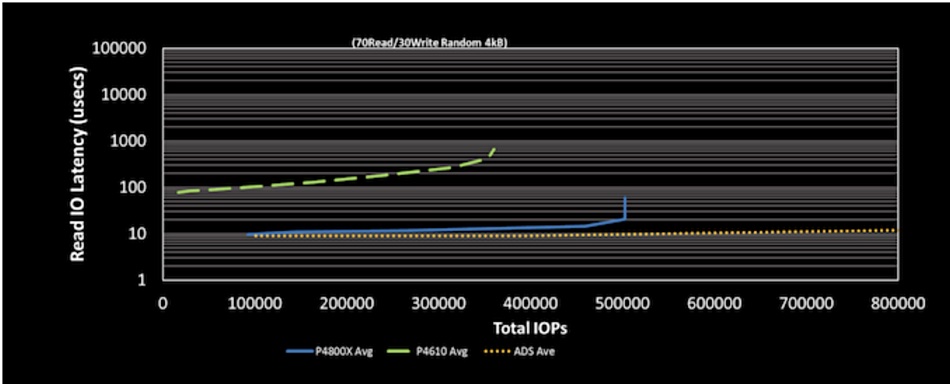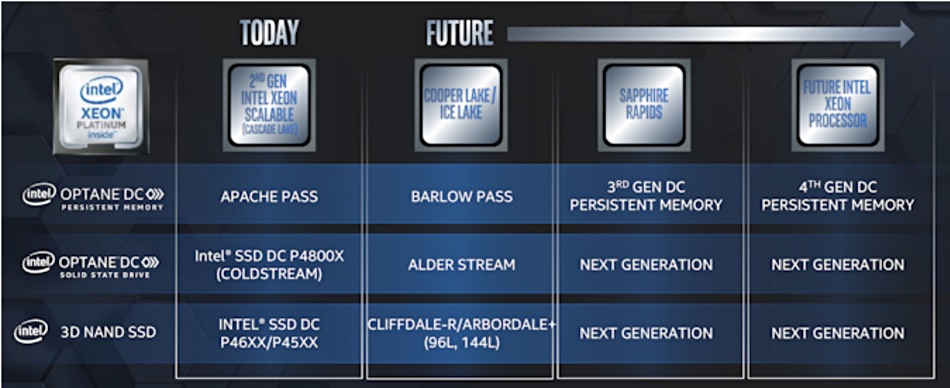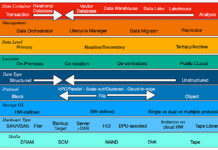Intel has teased out some more details for the upcoming Barlow Pass PMEM 200 Optane DIMMs and Alder Stream Optane SSDs. These are the second generation versions of the company’s 3D Xpoint memory products.
The company also showed a slide at the Intel Architecture Day 2020 PowerPoint fest yesterday which showed third and fourth gen Optane are in the works.
Alder Stream
Alder Stream is the first Optane SSD to use four-layer 3D XPoint technology and will use PCIe 4.0. This combo will deliver “multiple millions of IOPS” – i.e. much faster performance than the gen 1 DC P4800X SSD which uses PCIe 3.0. The four-layer scheme increases bandwidth via parallelisation opportunities for the Optane controller, with the PCIe 4 bus providing an access pipe that is twice as fast as today’s PCIe 3.

Intel presented this Alder Stream performance chart at IAD 20.

The gen 1 P4800X Optane SSD, with its dual ports, (blue line in chart above) is faster than the P4610 NAND SSD (green dashes). Alder Stream (orange dots) has a 10 microsec latency and delivers upwards of 800,000 mixed read/write IOPS. Intel showed a similar chart at a September 2019 event in Seoul, which showed Alder Stream surpassing 700,000 IOPS. It now goes faster.
Barlow Pass
Barlow Pass is about 25 per cent faster in memory bandwidth than the gen 1 Optane DC Persistent DIMM and will come in 128GB, 256GB and 512GB capacities. The 256GB Barlow Pass PMEM 200 series DIMM has a 497PBW rating while the gen 1 256GB capacity DIMM has a 360PBW rating. Both generations provide up to 4.5TB of memory per socket.
Optane roadmap
A slide at IAD 20 shows the Optane roadmap stretches to four generations.

That’s interesting as far as it goes but the company is not saying anything yet about the technology underlying gen 3 and gen 4 Optane. Gen 2 Optane doubles the 2-layer gen 1 technology to 4 layers (or ‘decks’ in Intel terminology). A continuation of this doubling trend would mean gen 3 has 8 layers and gen 4 will have 16 layers.
However a caveat is necessary as neither Intel nor XPoint manufacturer Micron have said that gen 3 will be a double decker compared to gen 2 or that gen 4 will double-deck gen 3. Layer count increases for 3D NAND have generally followed a 32 – 48 – 64 – 96 layer scheme rather than doubling and XPoint could grow by simply adding an extra 2 decks each generation. Analysts are wary of predicting XPoint layer count progress as neither Micron nor Intel provide any hints.
Intel has not confirmed availability dates for Barlow Pass or Alder Stream, though both are expected this year.








